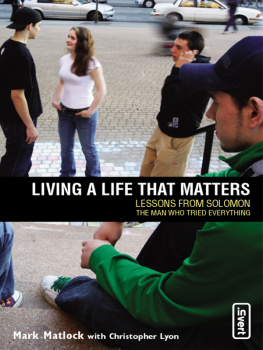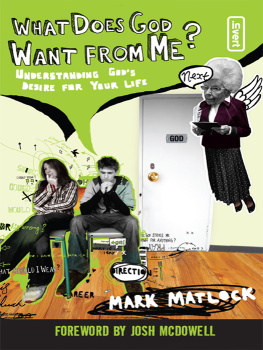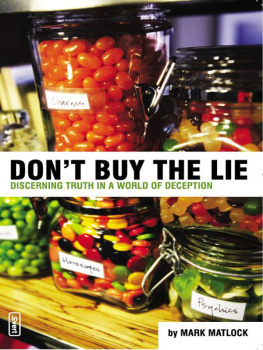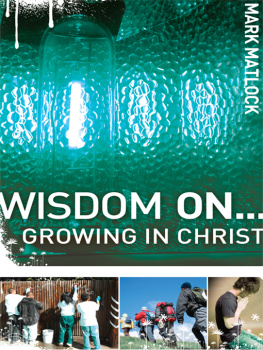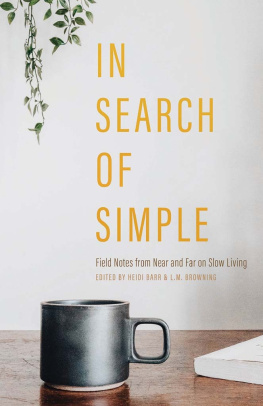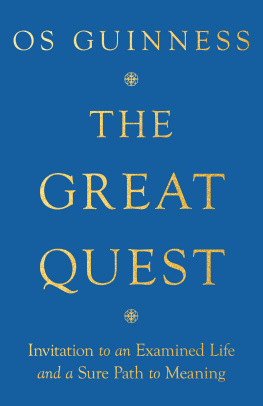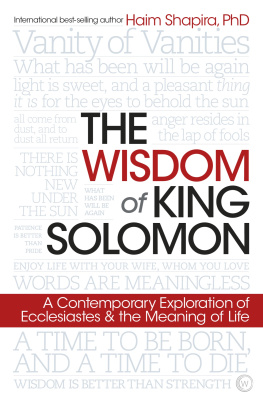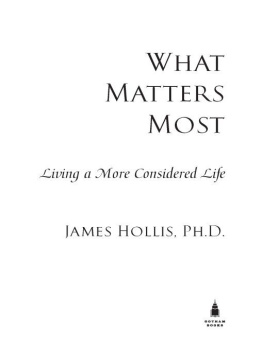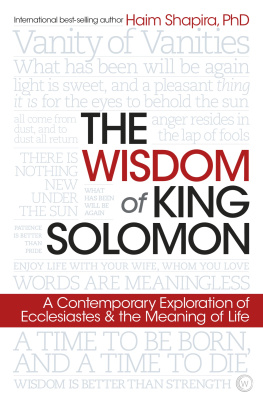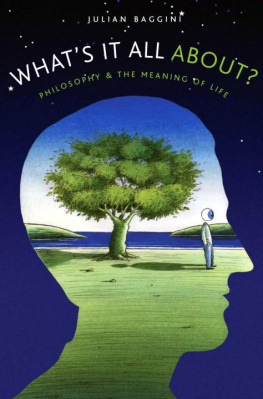
INVERT
LIVING A LIFE THAT MATTERS: LESSONS FROM SOLOMON - THE MAN WHO TRIED EVERYTHING
Copyright 2005 by Youth Specialties
All rights reserved under International and Pan-American Copyright Conventions. By payment of the required fees, you have been granted the non-exclusive, non-transferable right to access and read the text of this e-book on-screen. No part of this text may be reproduced, transmitted, down-loaded, decompiled, reverse engineered, or stored in or introduced into any information storage and retrieval system, in any form or by any means, whether electronic or mechanical, now known or hereinafter invented, without the express written permission of Zondervan.
ePub Edition June 2009 ISBN: 0-310-86281-7
Youth Specialties products, 300 S. Pierce St., El Cajon, CA 92020 are published by Zondervan, 5300 Patterson Ave. SE, Grand Rapids, MI 49530.
Library of Congress Cataloging-in-Publication Data
Matlock, Mark.
Living a life that matters : lessons from Solomon- the man who tried everything / by Mark Matlock.
p. cm.
ISBN-13: 978-0-310-25816-2
1. Christian youthReligious life. 2. Bible. O.T.
EcclesiastesCriticism, interpretation, etc. I. Title.
BV4531.3.M39 2005
248.83dc22
2005015116
All Scripture quotations, unless otherwise indicated, are taken from the HolyBible: New International Version. NIV. Copyright 1973, 1978, 1984 by International Bible Society. Used by permission of Zondervan. All rights reserved.
All rights reserved. No part of this publication may be reproduced, stored in a retrieval system, or transmitted in any form or by any means electronic, mechanical, photocopy, recording, or any other except for brief quotations in printed reviews, without the prior permission of the publisher.
Web site addresses listed in this book were current at the time of publication. Please contact Youth Specialties via e-mail (YS@YouthSpecialties.com) to report URLs that are no longer operational and replacement URLs if available.
Editorial direction by Randy Southern
Edited by Sharon Odegaard
Proofread by Anna Hammond and Heather Haggerty
Cover design by Burnkit
06 07 08 09 10 11 12 19 18 17 16 15 14 13 12 11 10 9 8 7 6 5 4 3 2
THIS BOOK IS DEDICATED TO MY PARENTS, TOM AND
JUDI MATLOCK WHO TAUGHT ME HOW TO LOOK AROUND
AND SEE GODS TRUTH EVERYWHERE.
CONTENTS
HOW TO USE
THIS BOOK
Have you ever been driving on the highway past some really beautiful scenery? Maybe it was the mountains or a gorgeous coastline? You can respond to that kind of drive in one of two ways. Either keep your foot on the gas and just try to catch glimpses while you speed past. Or stop once in a while to take it all in. Maybe snap a few pictures. Some people even like to get off the highway and explore the backroads to get a real flavor for the country.
You can read a book like this in one of two ways, also. Lots of people will pick it up and just plow through the pages from front to back. They might like some of the ideas that whiz by, but they dont have time to really stop and think about it.
We hope some of you take the other approach to these pages. Getting the most out of it probably means taking some time as you read for reflection about what youre reading and how it fits with what youre seeing in the world around you. Its tough to wrestle with deep truths about who you are and where your life is headed without slowing down a little.
OBSERVATION EXERCISES
To help, weve provided some scenic overlooks at the end of each chapter. Theyre called Observation Exercises. The idea is to pull off for a few minutes, get out, stretch your mental legs, and really notice how the ideas in the book match up with what youre seeing in your own world. And then to think about what you should do about it.
HOW TO TALK TO UNBELIEVING FRIENDS
If youre a believer, take a minute while your stopped to look at our suggestions for talking to someone who isnt a Christian about what youve just read. Our hope is to give you enough juice to jumpstart a conversation about the most important things in life with your friends and family members.
TOO MUCH IS
NEVER ENOUGH
What if you could have it all?
Money. Power. Love. Sex. Respect. Popularity. Absolutely anything you want. Many of us spend our lives wishing for that very scenarioor at least imagining what it would be like. But not many of us get there.
Mel Gibson got there.
Once an unknown Australian actor, Gibson got his first big break starring in the cult classic Mad Max when he was twenty-three. More big roles followed in blockbusters such as the Lethal Weapon series, Maverick, Ransom, Conspiracy Theory, Payback,What Women Want and Signs. As his international stardom grew, so did his bank account. He is now one of the top-paid actors in the world. For every movie he stars in, he now gets $25 million.
But acting wasnt enough for him. In 1993 he stepped behind the camera to direct The Man Withouta Face. Two years later he earned two Academy Awards for directing and producing Braveheart.
Gibsons success didnt stop with his career. Hes been married to the same woman for 25 years, and they have seven kids together. People magazine named him the Sexiest Man Alive. Premiere magazine listed him as one of the most powerful people in Hollywood.
Worldwide fame. Unlimited riches. True love. Fatherhood. Widespread respect for his talent. International renown for his sexual appeal. Virtually limitless power in his career. Rarely does one man get so much in one lifetime.
Mel Gibson had it all. So he must have been the happiest man on the planet, right? He had the power to do almost anything he wanted. The money to buy almost anything he could imagine. Almost nothing was out of reach for him.
Yet Gibson felt something was missing. All that he had wasnt enough for him. So he added some new experiences to the mix. I would get addicted to anything, he admits. Anything at all, okay? Drugs, booze, anything. You name it. Coffee, cigarettes. Sometimes I used to drive inebriated. I mean, this is the height of careless stupidity. Done a lot of things Im not proud of.
Eventually Gibson sought treatment for his addictions. But after getting clean and sober, he found himself right back where he had started: with an emptiness in his life.
I just didnt want to go on.
Thats what he told Diane Sawyer in an interview on ABCs Primetime Live. All of his personal success had brought him to a place where the most appealing option to him was to jump out a window and end it all.
You know, I was looking down thinking, man, this is just easier this way, he said. I dont know, you have to be mad, you have to be insane to despair in that way. But that is the height of spiritual bankruptcy. Theres nothing left.
NOTHING WORKS
If Mel Gibson had made that jumpif hed killed himself at the height of his successhe would have joined a list of well-known people who got it all and then decided it wasnt enough. One of the best known is Nirvanas Kurt Cobain. He and his band turned the music world upside down in the early 1990s with what became known as grunge music. They enjoyed enormous success with critics and music lovers alike. Despite that success, Cobain refused to become a corporate icon and stayed true to his slacker roots. And a generation of fans loved him for it.
Worldwide fame. Big money. Artistic respect. Influential power. Love (Courtney that is). Integrity. Fatherhood. Drugs. Alcohol. Sex. Kurt Cobain had it all. But all of it wasnt enough to help him overcome his lifelong battle with depression, addiction, and chronic pain. In fact, some people who knew him said having it all might have made things worse. Eventually, he just couldnt enjoy any of it.
Next page
